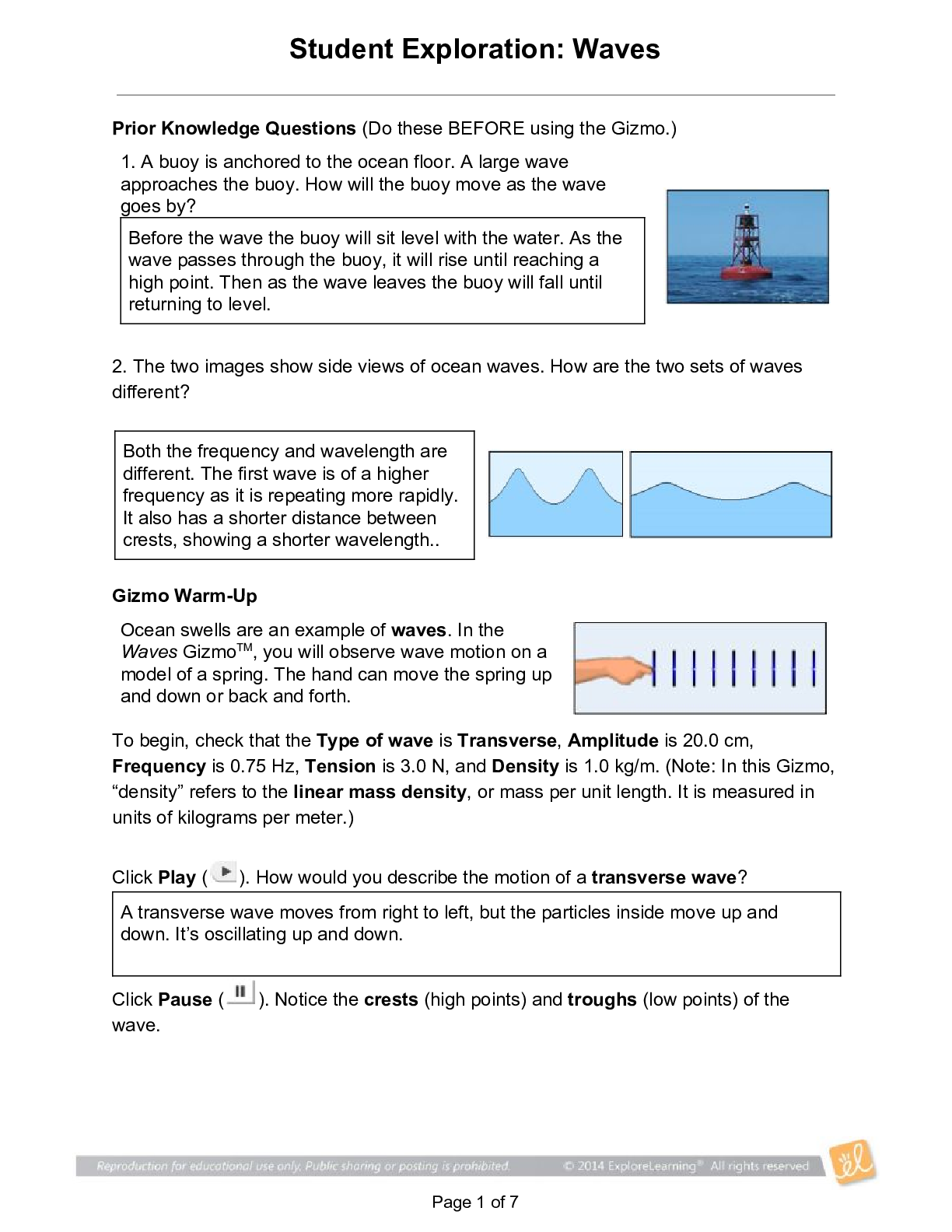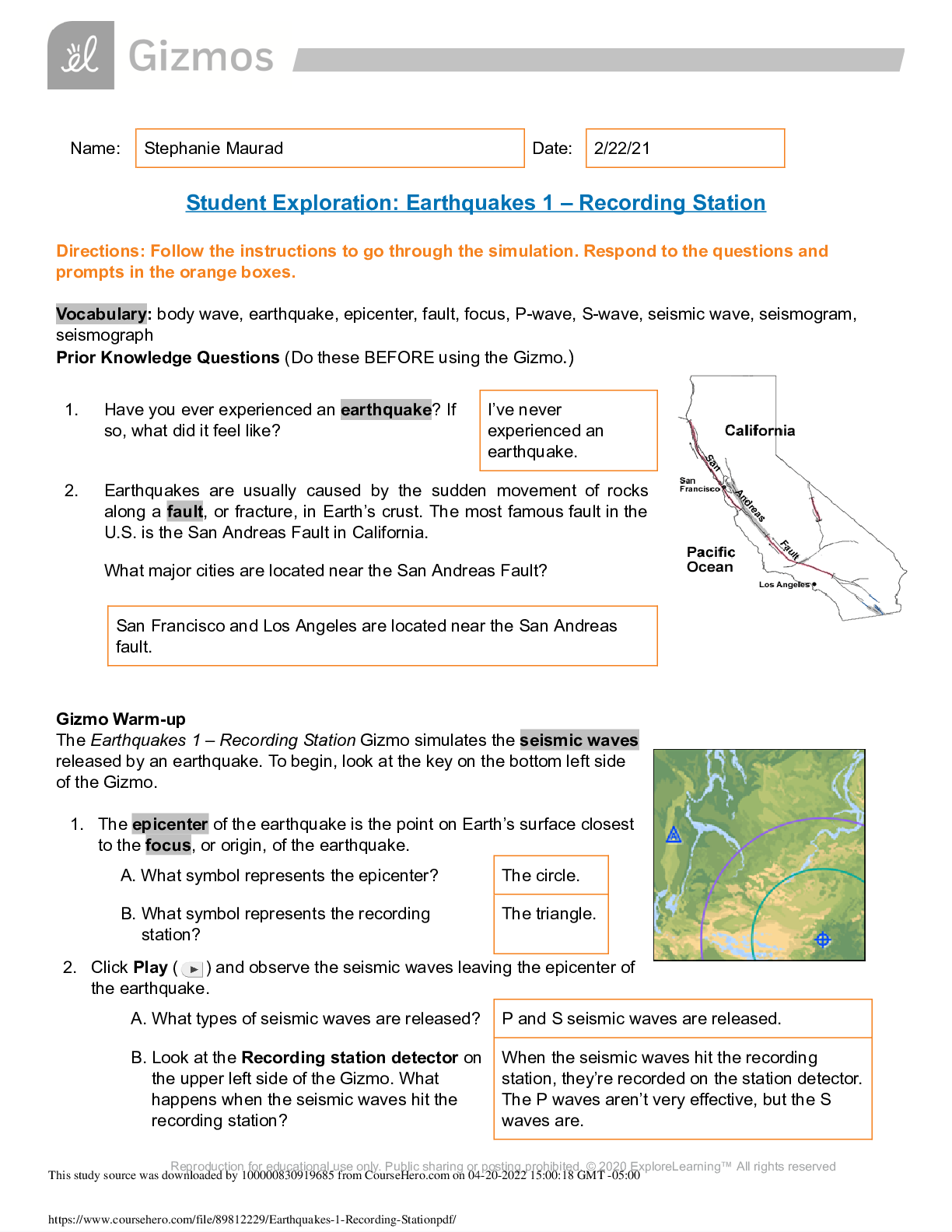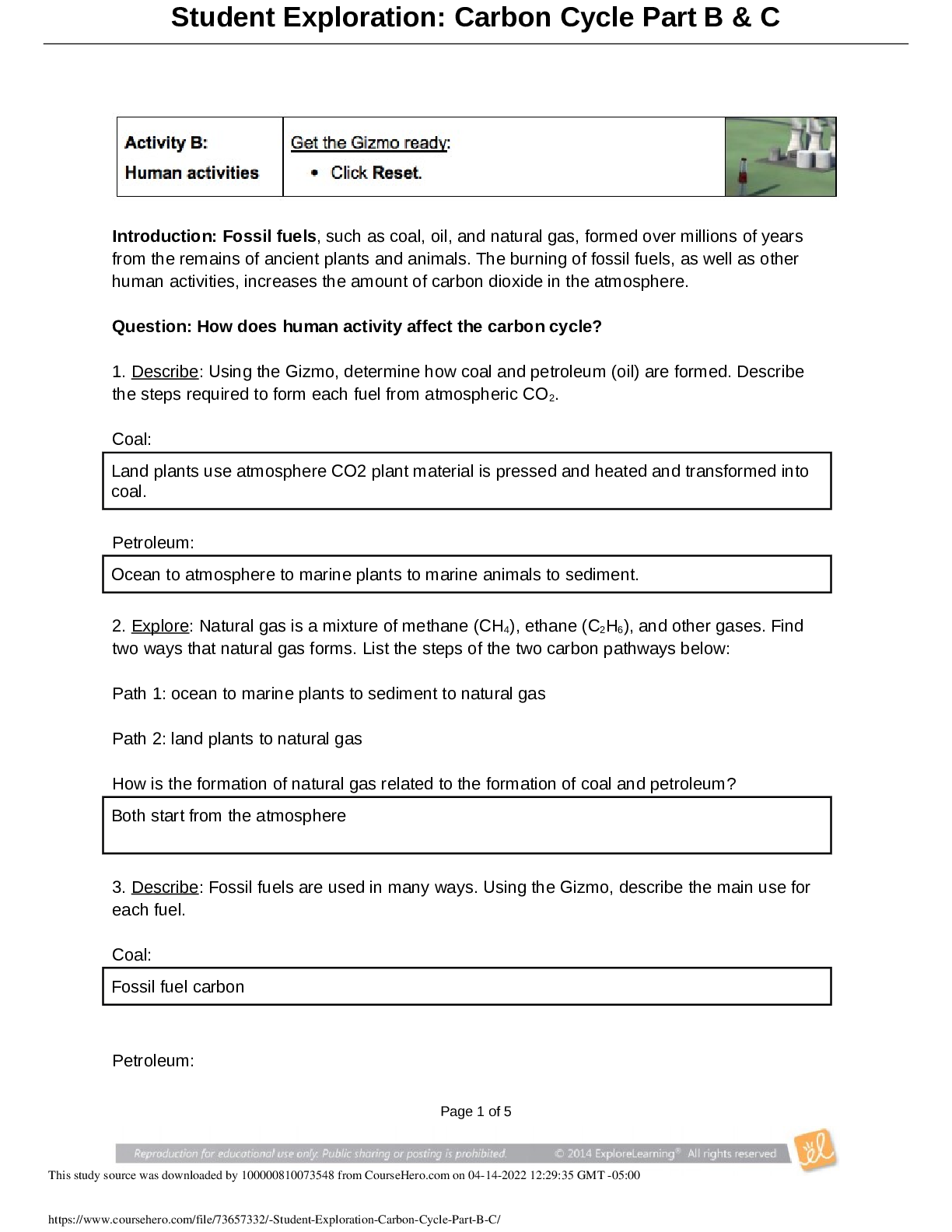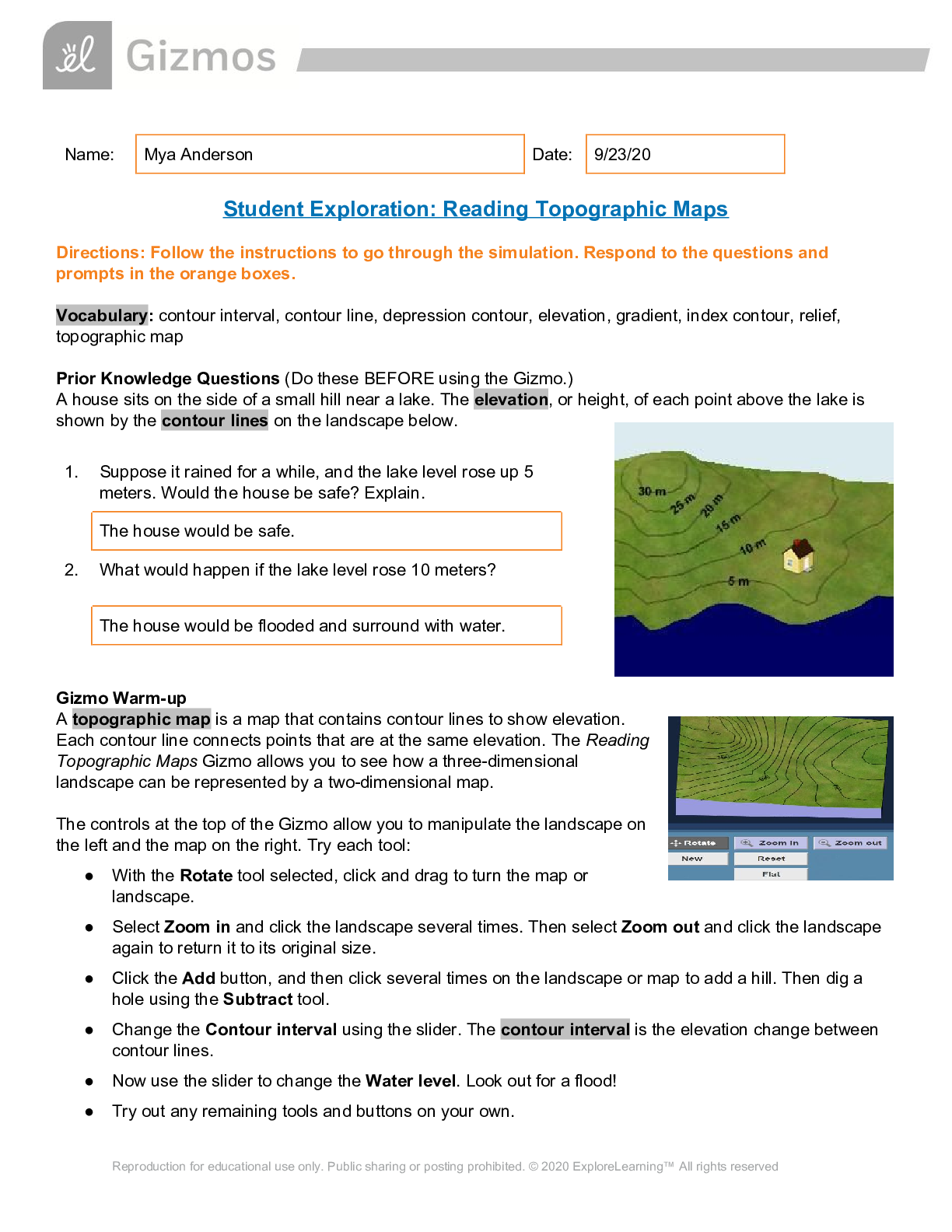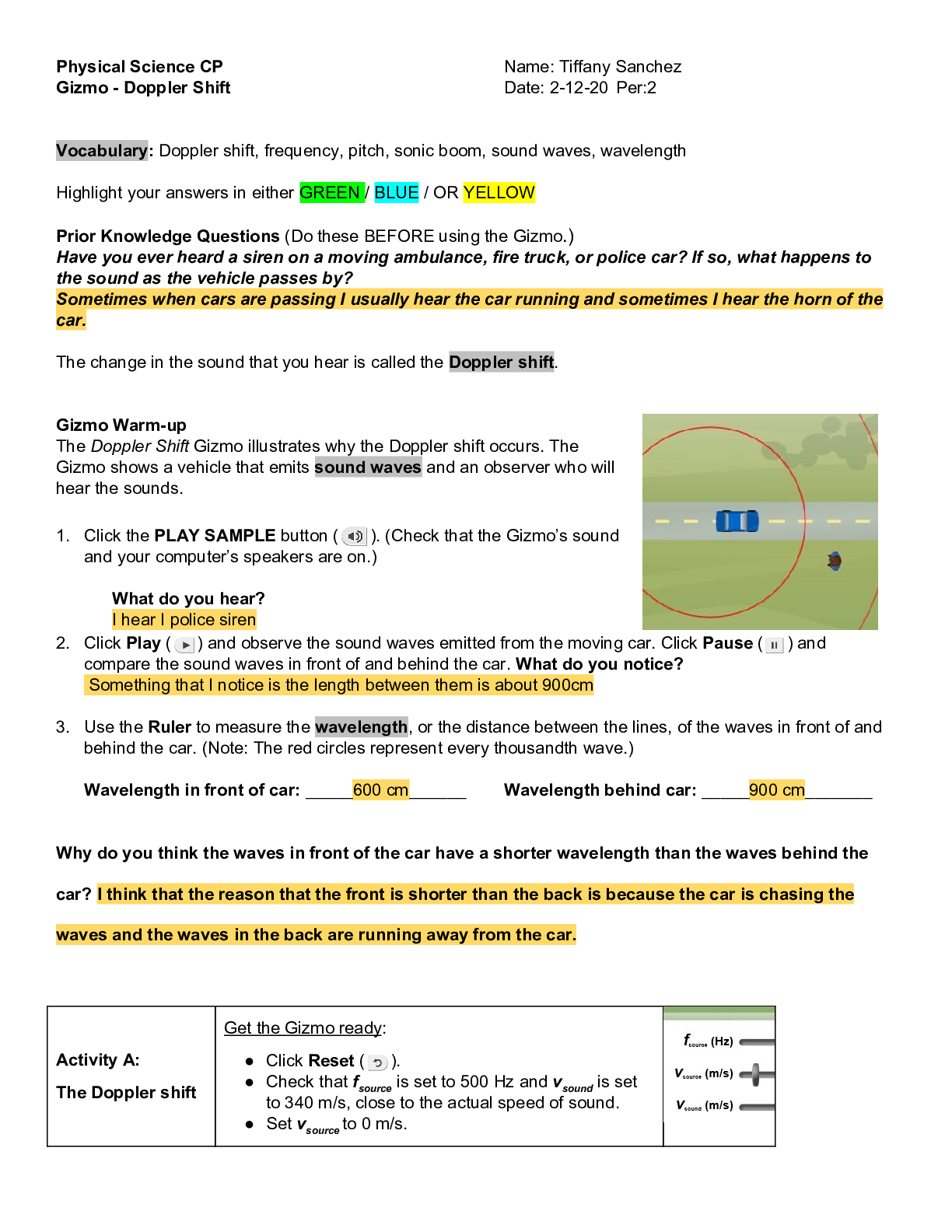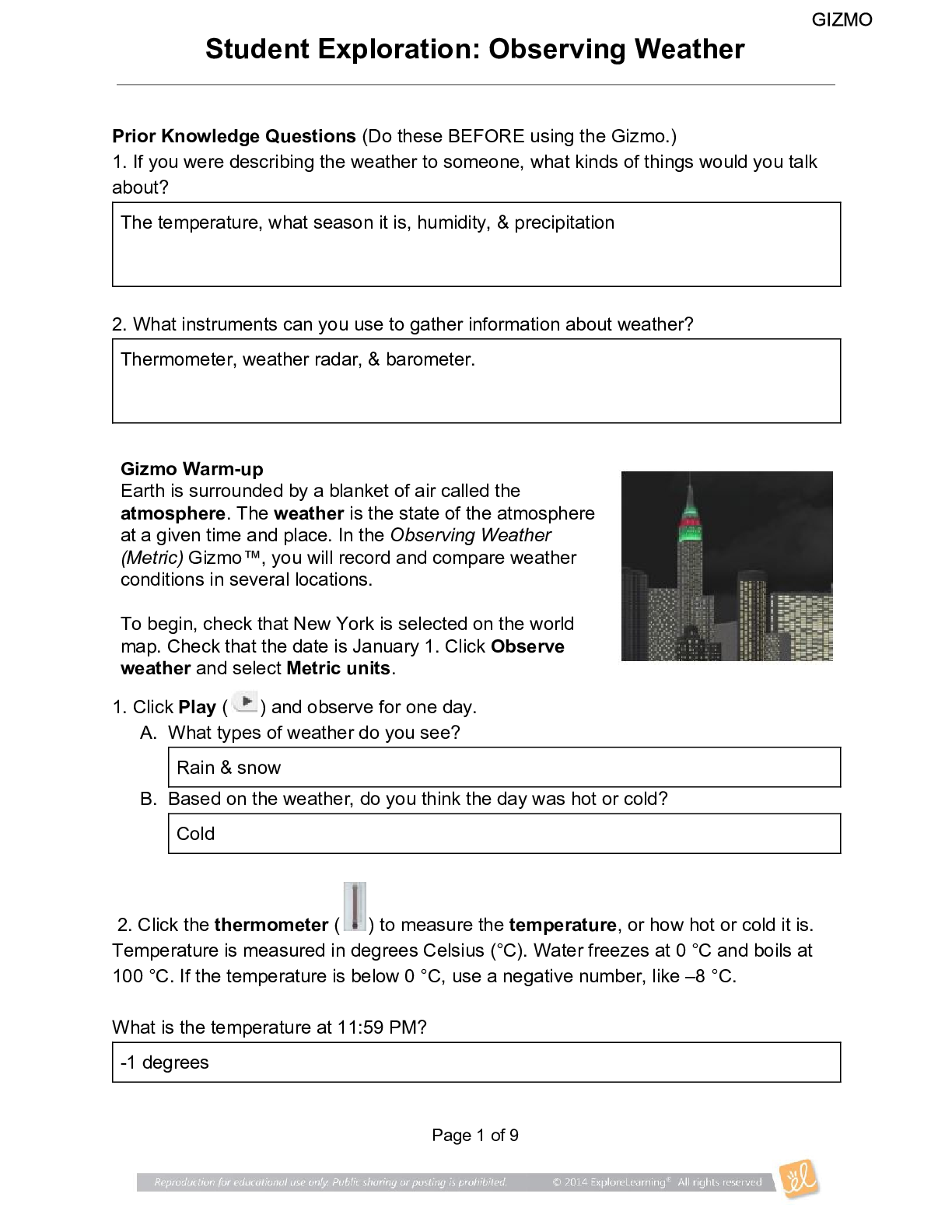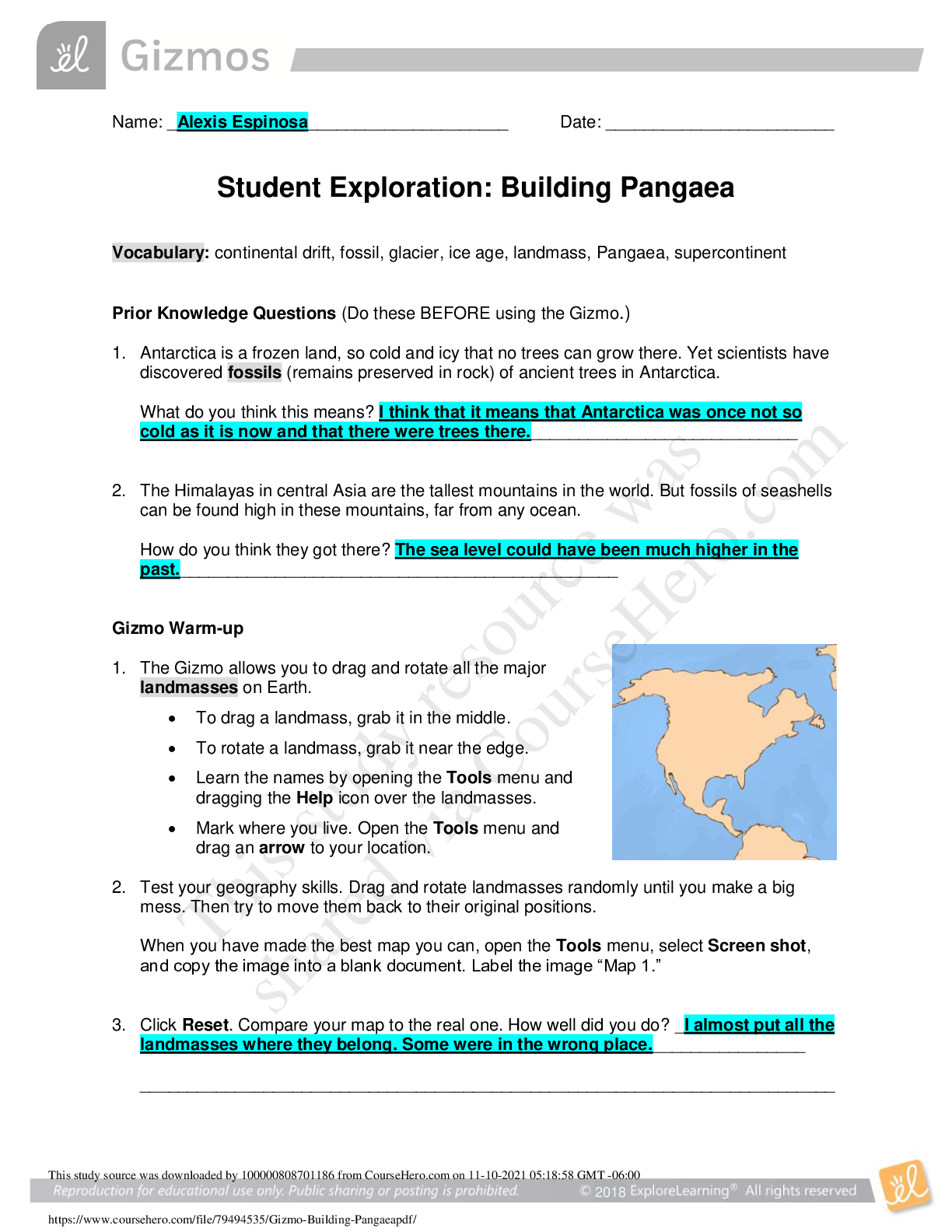SCIENCE 101 > GIZMOS > SCIENCE Biology. Student Exploration: Carbon Cycle. (All)
SCIENCE Biology. Student Exploration: Carbon Cycle.
Document Content and Description Below
Student Exploration: Carbon Cycle Directions: Type your responses in red. Vocabulary: atmosphere, biomass, biosphere, carbon reservoir, carbon sink, fossil fuel, geosphere, greenhouse gas, hydrosph ... ere, lithosphere, photosynthesis Prior Knowledge Questions (Do these BEFORE using the Gizmo.) In the process of photosynthesis, plants take in carbon dioxide (CO2) from the atmosphere and water (H2O) from the soil. Using the energy of sunlight, plants build molecules of glucose (C6H12O6) and oxygen (O2). 1. How do plants on Earth affect the amount of carbon in Earth’s atmosphere? 2. Animals eat plants and produce carbon dioxide and water. How do animals affect the amount of carbon in Earth’s atmosphere? Gizmo Warm-up The Carbon Cycle Gizmo allows you to follow the many paths an atom of carbon can take through Earth’s systems. To begin, notice the black carbon atom in the Atmospheric CO2 area, highlighted in yellow. The glowing blue areas represent possible locations the carbon atom could go next. 1. From Earth’s atmosphere, where can the carbon atom go next? 2. Click on Land plants and read the description. How did the carbon atom get from the atmosphere to a plant? 3. Select Land animals. How did the carbon atom get from land plants into the animal? Adelina Chicas 01/13/2020 Plants take carbon from the atmosphere to photosynthesis Through food chains, the carbon that is in plants moves to the animals that eat them. Animals that eat other animals get the carbon from their food too. The earth's atmosphere goes to the oceanic next dissolves into rainwater, forming a weak, carbonic acid(H2CO2), reacts with minerals in the rocks to dissolve2018 4. Select Atmospheric CO2. How did the carbon atom get from land animals back to the atmosphere? Activity A: Carbon pathways Get the Gizmo ready: Click Reset. Introduction: Earth can be divided into four systems. The atmosphere is the air above Earth’s surface. The hydrosphere is composed of all of Earth’s water. The geosphere is the rocky, non-living part of Earth. The biosphere consists of all living things, including people. Some scientists use the term “anthroposphere” to describe everything made or modified by humans. Question: How does carbon move between the atmosphere, hydrosphere, biosphere, and geosphere? 1. Explore: Use the Gizmo to create a path for carbon that begins and ends in the atmosphere. Fill in the steps in the path below. Then, label each location with the system it represents. Finally, summarize very briefly how the carbon atom got to that location. [Show More]
Last updated: 3 years ago
Preview 1 out of 16 pages
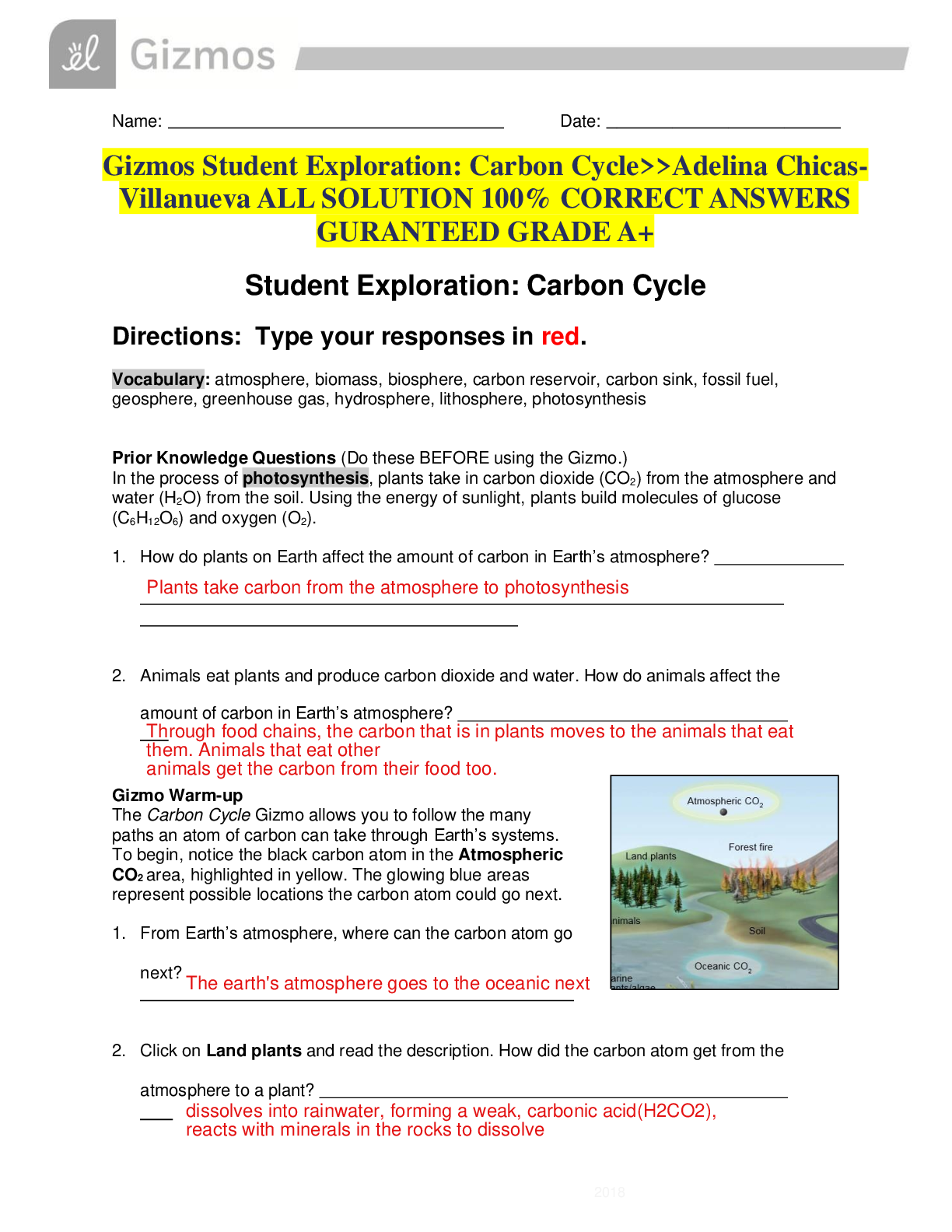
Buy this document to get the full access instantly
Instant Download Access after purchase
Buy NowInstant download
We Accept:

Reviews( 0 )
$8.00
Can't find what you want? Try our AI powered Search
Document information
Connected school, study & course
About the document
Uploaded On
Apr 14, 2022
Number of pages
16
Written in
All
Additional information
This document has been written for:
Uploaded
Apr 14, 2022
Downloads
0
Views
165

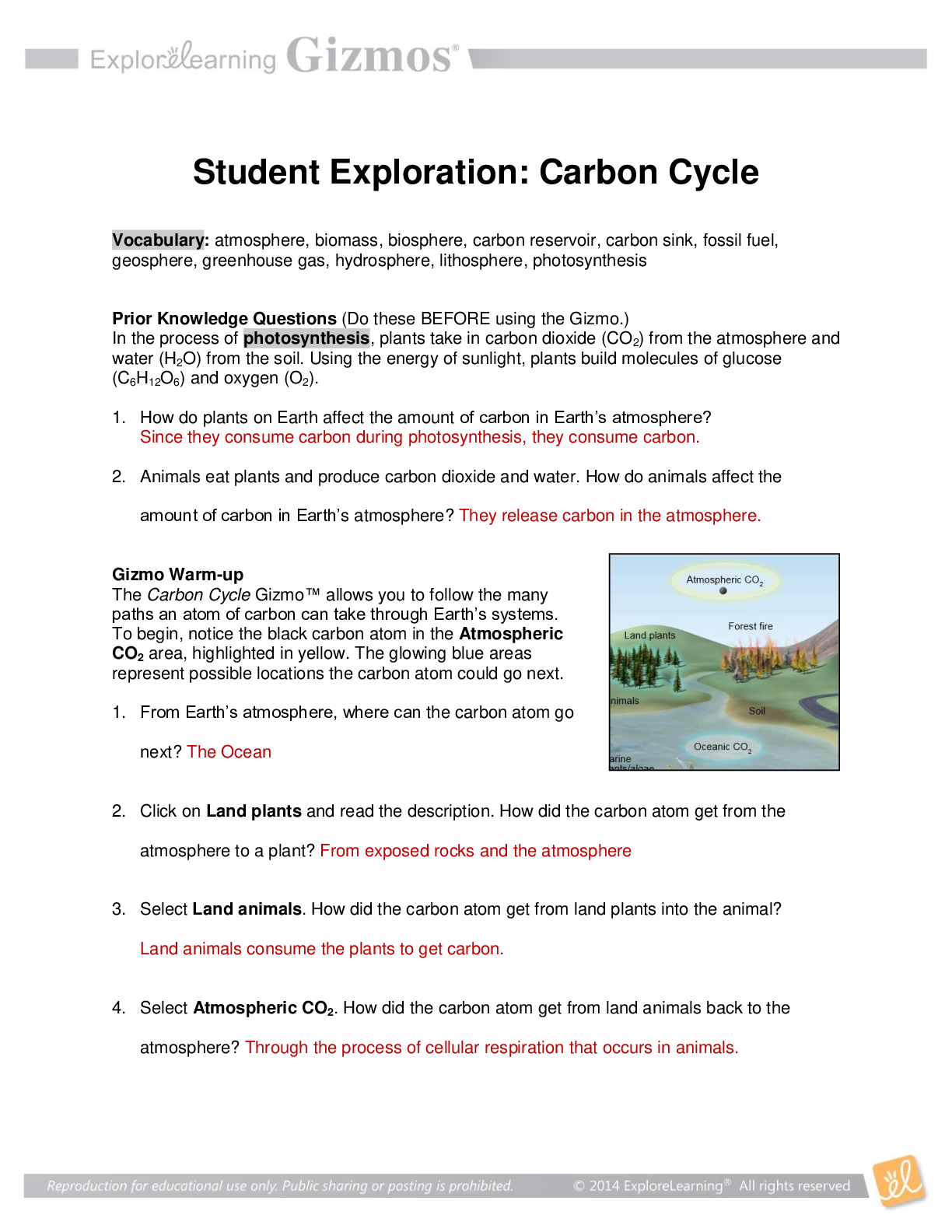
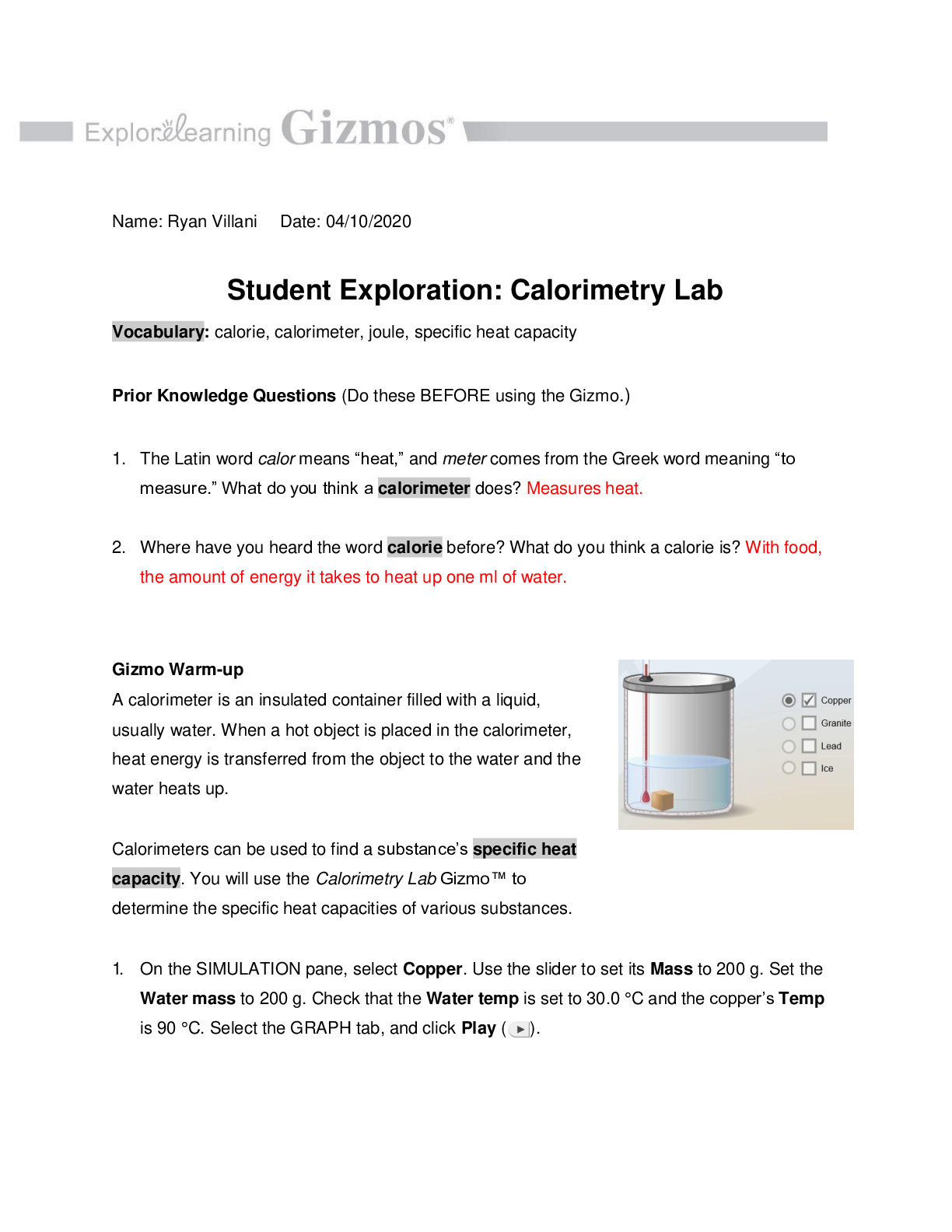
.png)
.png)

